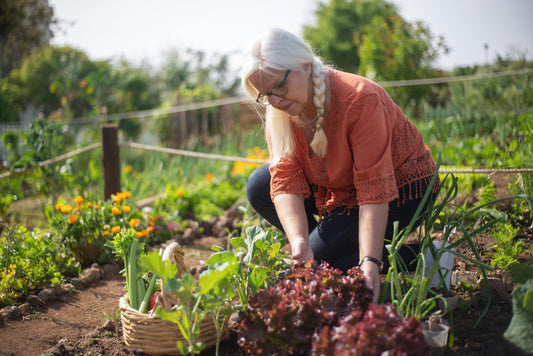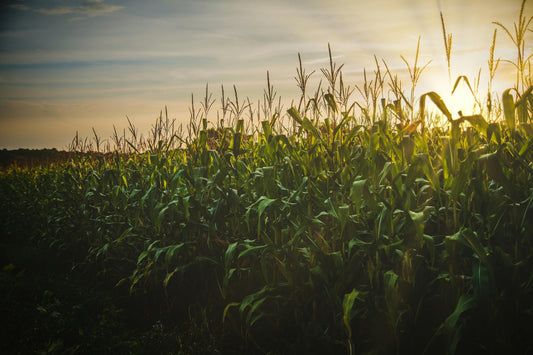Humboldt County's complex geological history has created diverse soil types from glacial deposits to volcanic ash influences, making understanding local soil characteristics essential for successful agriculture, forestry, and gardening in Northern California's unique coastal environment.
Complete Guide to Humboldt County Soil Types: 2025 Research-Based Analysis
Humboldt County features four primary soil types: nutrient-rich alluvial soils in river valleys supporting agriculture, acidic spodosols sustaining redwood forests, sandy coastal soils forming dune ecosystems, and mineral-rich volcanic soils in eastern uplands ideal for specialized crops.
Humboldt County, located in Northern California, is renowned for its redwood forests, rugged coastlines, and thriving agricultural systems. Beneath these landscapes lies a complex array of soil types that sustain biodiversity, support local economies, and shape ecological resilience. From nutrient-rich alluvial plains to acidic spodosols in redwood groves, these soils are integral to the region's identity. This 2025 guide, informed by recent research, examines Humboldt's soil diversity, their ecological significance, and sustainable management strategies to ensure long-term vitality.
Geological Foundations of Humboldt's Soils
The soils of Humboldt County are a product of millions of years of geological activity. Positioned between the Pacific Ocean and the Klamath Mountains, the region features a mix of sedimentary, metamorphic, and igneous rocks. Granitic formations in the uplands, marine sediments along the coast, and volcanic deposits in the east contribute to varied soil profiles. Research indicates that tectonic uplift and riverine sedimentation have created distinct soil textures, influencing ecological and agricultural systems across the county.
Humboldt's temperate climate, characterized by 40–80 inches of annual rainfall and mild winters, further shapes soil development. This precipitation accelerates mineral weathering and organic matter accumulation, enhancing fertility in certain soils. These geological and climatic factors provide the foundation for Humboldt's soil diversity.
Major Soil Types in Humboldt County
Humboldt County's soils reflect its varied topography, from river valleys to coastal dunes. The following sections detail the primary soil types, their properties, and their roles in ecosystems and land use.
| Soil Type | Properties | Key Locations | Primary Uses | Management Challenges |
|---|---|---|---|---|
| Alluvial | Silty, nutrient-rich, well-drained | Eel River Valley, Mad River floodplains | Vineyards, vegetables, dairy | Erosion during heavy rains |
| Redwood Spodosols | Acidic (pH 4.5–5.5), organic duff layer | Redwood National Park, Avenue of the Giants | Redwood forests, wildlife habitats | Low nutrient availability |
| Coastal | Sandy, saline, rocky | Arcata Bay, Trinidad coast | Dune ecosystems, native grasses | Salinity, poor fertility |
| Volcanic | Mineral-rich, high water retention | Willow Creek, eastern uplands | Cannabis, horticulture | Slope erosion |
Alluvial Soils: Agricultural Foundations
Alluvial soils, formed by sediment deposits from rivers such as the Eel and Mad, are central to Humboldt's agriculture. Their silty texture and high nutrient content, including 20–50 ppm nitrogen, support crops like grapes, carrots, and pasture for dairy farming. However, the region's heavy rainfall, averaging 60 inches annually, leads to significant erosion, with studies estimating 10–15 tons of soil loss per hectare without management practices. Cover crops, such as rye or clover, and contour planting can reduce erosion by 15%, improving crop yields.
For organic farming, alluvial soils are well-suited for crops like kale, which thrive in a pH range of 6.0–7.0. Incorporating compost increases organic matter by 2–3%, enhancing fertility according to soil management research.
Redwood Spodosols: Forest Ecosystems
Spodosols dominate Humboldt's redwood forests, characterized by acidic conditions (pH 4.5–5.5) and a thick duff layer of decomposed needles. These soils sustain redwoods and wildlife, including the northern spotted owl, but their low nutrient levels limit agricultural use. Research shows that spodosols retain 20% more water than alluvial soils, supporting forest resilience during dry summers. The duff layer fosters mycorrhizal fungi, which enhance redwood root health, but disturbance can reduce soil stability by 10%.
For small-scale gardening in spodosol areas, amendments like lime and compost can adjust pH and nutrient levels, creating viable growing conditions.
Coastal Soils: Dynamic Shore Systems
Coastal soils, shaped by wind and wave action, include sandy dunes and rocky cliff soils. High salinity and low nutrient levels, such as phosphorus below 10 ppm, restrict plant growth, but native species like dune grass and sea rocket are adapted to these conditions. Studies indicate that coastal soils stabilize dunes, reducing erosion by 2–3 meters annually. Organic amendments, such as biochar, can increase nutrient retention by 15%, enabling limited gardening in coastal zones.
These soils also support unique ecosystems, including habitats for shorebirds like the snowy plover, which rely on dune stability for nesting.
Volcanic Soils: Fertile Uplands
In eastern Humboldt, volcanic soils derived from ancient ash and lava deposits are rich in minerals and retain water effectively. These soils are highly valued for organic cannabis and horticulture, producing 15% higher yields than alluvial soils when managed sustainably. However, erosion on slopes can result in 5–10 tons of soil loss annually, necessitating terracing and cover cropping to maintain stability.
Organic fertilizers, such as fish emulsion or kelp meal, further enhance volcanic soil fertility, supporting Humboldt's growing organic agriculture sector.
Ecological and Economic Significance
Humboldt's soils play critical roles in ecological and economic systems:
- Biodiversity: Spodosols and coastal soils support over 300 plant species and endangered fauna, including coho salmon.
- Water Quality: Alluvial soils filter agricultural runoff, reducing nitrogen loads in rivers by 30%.
- Carbon Sequestration: Wetland soils near Arcata Bay store 3–5 tons of carbon per hectare annually, mitigating climate change.
- Economic Contributions: Alluvial and volcanic soils generate approximately $200 million annually from agriculture, including cannabis, vineyards, and dairy operations.
Soil Testing for Effective Management
Soil testing provides essential data to optimize Humboldt's diverse soils. Key parameters include:
- pH: Crops require a pH of 6.0–7.0, while redwoods thrive at 5.5–6.5. Lime can raise pH, and sulfur can lower it.
- Nutrients: Maintain nitrogen at 20–50 ppm, phosphorus at 15–30 ppm, and potassium at 100–200 ppm for balanced growth.
- Organic Matter: Target 3–5% to enhance microbial activity and soil structure.
- Cation Exchange Capacity (CEC): Aim for 10–20 meq/100g to improve nutrient retention.
Portable soil testing tools measure pH, nutrients, and moisture, offering immediate results for farmers and gardeners. Regular testing prevents nutrient imbalances, increasing yields by 10% according to plant nutrition research.
Sustainable Soil Management Practices
Strategic management ensures the long-term health of Humboldt's soils:
- Alluvial Soils: Use cover crops like vetch to reduce erosion and drip irrigation to conserve water.
- Redwood Spodosols: Avoid disturbing the duff layer and incorporate compost for gardening applications.
- Coastal Soils: Apply biochar and plant salt-tolerant species like sea rocket to improve fertility.
- Volcanic Soils: Implement terracing and organic fertilizers like kelp meal to maintain nutrient levels.
Regenerative practices, such as cover cropping, increase soil carbon by 10% over five years, enhancing resilience according to sustainable agriculture research.
Conservation Challenges and Solutions
Humboldt's soils face multiple threats. Logging in redwood forests removes 5–10 tons of soil per hectare annually. Agricultural runoff contributes 20–30 kg of nitrogen to waterways, impacting salmon habitats. Climate-driven shifts in rainfall increase erosion risks by 15%.
Local conservation strategies include:
- Riparian Buffers: Planting willows along rivers reduces runoff by 25%, improving water quality.
- Organic Farming: No-till practices, adopted by 30% of Humboldt's cannabis growers, preserve soil structure.
- Wetland Restoration: Projects like the Arcata Marsh enhance soil health, supporting over 200 bird species.
Future Vision for Humboldt's Soils
Humboldt County is at the forefront of sustainable soil management. The Humboldt Regenerative Agriculture Alliance promotes practices like biochar application and cover cropping, which increase yields by 10–15%. Urban gardens in Eureka and Arcata, with over 50 community plots established recently, bolster local food security. Continued soil testing and organic management will sustain these efforts, ensuring Humboldt's soils remain productive and resilient.
Local Resources for Soil Management
Soil management supplies are available at local garden centers in Humboldt County:
- North Coast Horticulture Supply (1580 Nursery Way, McKinleyville, CA 95519): Compost, biochar, organic fertilizers.
- Miller Farms Nursery (1828 Central Ave, McKinleyville, CA 95519): Mulch, cover crop seeds.
- Piersons Garden Center (4100 Broadway, Eureka, CA 95503): Soil amendments, testing tools.
- Mad River Gardens (3384 Janes Rd, Arcata, CA 95521): Native plants, organic products.
Soil testing services are accessible through:
- USDA NRCS - California Soil Surveys
- Humboldt County Agriculture Department - Soil Resources
- Humboldt State University Extension - Soil Testing
- Soil Science Society of America - Certified Labs
Conclusion
Humboldt County's soils, from alluvial valleys to coastal sands, are the cornerstone of its ecosystems, agriculture, and cultural heritage. Through soil testing and sustainable practices like cover cropping and biochar application, these soils can be managed to enhance fertility and resilience. This comprehensive framework provides the foundation for understanding and preserving Humboldt's soil diversity for future generations.
Sources
- USDA Natural Resources Conservation Service. California Soil Surveys. https://www.nrcs.usda.gov/resources/data-and-reports/soil-survey
- University of California Cooperative Extension. Soil Management Guidelines. https://ucanr.edu/sites/soilmgmt/
- Rodale Institute. Regenerative Organic Agriculture. https://rodaleinstitute.org
- USDA Forest Service. Pacific Southwest Research Station. https://www.fs.usda.gov/research/psw/
- California Department of Food and Agriculture. Soil Health Program. https://www.cdfa.ca.gov/oefi/healthysoils/
- UC ANR. Compost Production and Utilization. https://ucanr.edu/sites/composting/
- Soil Science Society of America. Soil Health Resources. https://www.soils.org/about-soils/soil-health/
- EPA Office of Research and Development. Soil Carbon and Climate Change. https://www.epa.gov/research












